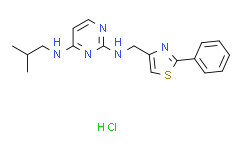
购物车0
产品总数:61440


| 商品编号 | 规格 | 价格 | 会员价 | 是否有货 | 数量 |
|---|---|---|---|---|---|
| PL01810-5mg | 5mg | ¥1366.00 | 请登录 |
|
|
| PL01810-10mg | 10mg | ¥2009.00 | 请登录 |
|
|
| PL01810-25mg | 25mg | ¥4018.00 | 请登录 |
|
|
| PL01810-50mg | 50mg | ¥6911.00 | 请登录 |
|
|
| PL01810-100mg | 100mg | ¥11749.00 | 请登录 |
|
|
| PL01810-200mg | 200mg | 询价 | 询价 |
|
|
| PL01810-500mg | 500mg | 询价 | 询价 |
|
|
| PL01810-10mM*1mLinDMSO | 10mM*1mLinDMSO | ¥1502.00 | 请登录 |
|
 扫码关注公众号
扫码关注公众号